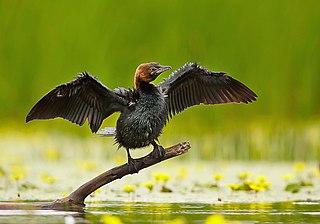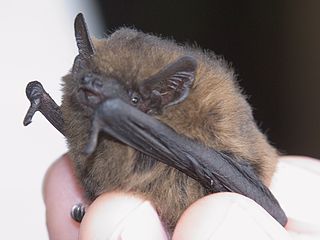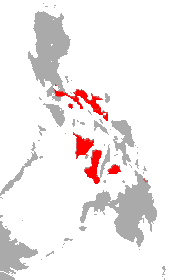
Skinks are lizards belonging to the family Scincidae, a family in the infraorder Scincomorpha. With more than 1,500 described species across 100 different taxonomic genera, the family Scincidae is one of the most diverse families of lizards. Skinks are characterized by their smaller legs in comparison to typical lizards and are found in different habitats except arctic and subarctic regions.
Melanoseps is a genus of lizards, known commonly as limbless skinks, in the family Scincidae. The genus is endemic to Sub-Saharan Africa.
Typhlacontias is a genus of legless, burrowing skinks in the family Scincidae, a genus endemic to Sub-Saharan Africa. Its sister group is the clade consisting of the genera Feylinia and Melanoseps.

The pygmy cormorant is a member of the Phalacrocoracidae (cormorant) family of seabirds. It breeds in south-eastern Europe and south-western Asia. It is partially migratory, with northern populations wintering further south, mostly within its breeding range. It is a rare migrant to western Europe.

The common pipistrelle is a small pipistrelle microbat whose very large range extends across most of Europe, North Africa, South Asia, and may extend into Korea. It is one of the most common bat species in the British Isles. In Europe, the northernmost confirmed records are from southern Finland near 60°N.

The Lake Wales Ridge National Wildlife Refuge is part of the United States National Wildlife Refuge (NWR) System, located in four separated areas on the Lake Wales Ridge east of US 27 between Davenport and Sebring Florida. The 1,194 acre (4.8 km2) refuge was established in 1990, to protect a host of plants and animals. It is also the first to be designated primarily for the preservation of endangered plants, and is not open to the general public. It contains a high proportion of remaining Florida scrub habitat. It is administered as part of the Merritt Island National Wildlife Refuge.

The soprano pipistrelle is a small species of bat. It is found in Europe and often roosts on buildings.

The little ground squirrel or little souslik, is a species of rodent in the family Sciuridae. It is found from Eastern Europe to Central Asia.

The Philippine pygmy roundleaf bat, also called the Philippine pygmy leaf-nosed bat, is a species of bat in the family Hipposideridae. It is endemic to the Philippines, where it has been recorded on Bohol, Luzon, Marinduque, Negros, Panay, and Mindanao.

Neotragus is a genus of dwarf antelope, native to Africa. The genus includes only a single species without any dispute, namely Neotragus pygmaeus. Neotragus pygmaeus is the smallest antelope in the world, they usually weigh around 5 to 7 pounds. This animal lives in conditions that are warm and moist, they are found in the tropical forests of Western Africa. The Neotragus pygmaeus diet consists of high nutrients food sources, such as leaves, flowers, plants, fruits, and the growing tips of shoots. Recent nucleic acid studies now suggest that the other two species formerly included in the genus are not closely related, and should be assigned to the genus Nesotragus. Members of the Nesotragus genus are the only surviving members of the subfamily Nesotraginae or tribe Nesotragini and are more closely related to the impala, while the royal antelope is still a member of the subfamily Antilopinae or tribe Antilopini.

Scincinae is a subfamily of lizards. The subfamily contains 33 genera, and the genera contain a combined total of 284 species, commonly called skinks. The systematics is at times controversial. The group is probably paraphyletic. It is one of three subfamilies of the family Scincidae, the other two being Acontinae and Lygosominae.

The black limbless skink is an extant species of skink, a lizard in the family Scincidae. The species is found in Mozambique, Malawi, Zambia, Kenya, Tanzania, and Democratic Republic of the Congo.
The Uluguru limbless skink is an extant species of skink, a lizard in the family Scincidae. The species is found in Tanzania.
The Pangani black limbless skink or longtail limbless skink is an extant species of skink, a lizard in the family Scincidae. The species is found in Tanzania.
Loveridge's limbless skink is an extant species of skink, a lizard in the family Scincidae. The species is found in Tanzania and Zambia.
The western limbless skink is an extant species of skink, a lizard in the family Scincidae. The species is found in Cameroon, Equatorial Guinea, Gabon, Democratic Republic of the Congo, Angola, and Central African Republic.
The Rondo limbless skink is an extant species of skink, a lizard in the family Scincidae. The species is found in Tanzania.
The Udzungwa limbless skink is an extant species of skink, a lizard in the family Scincidae. The species is found in Tanzania.
Scolecoseps acontias, also known commonly as the sandy limbless skink, is a species of lizard in the family Scincidae. The species is endemic to Tanzania.









